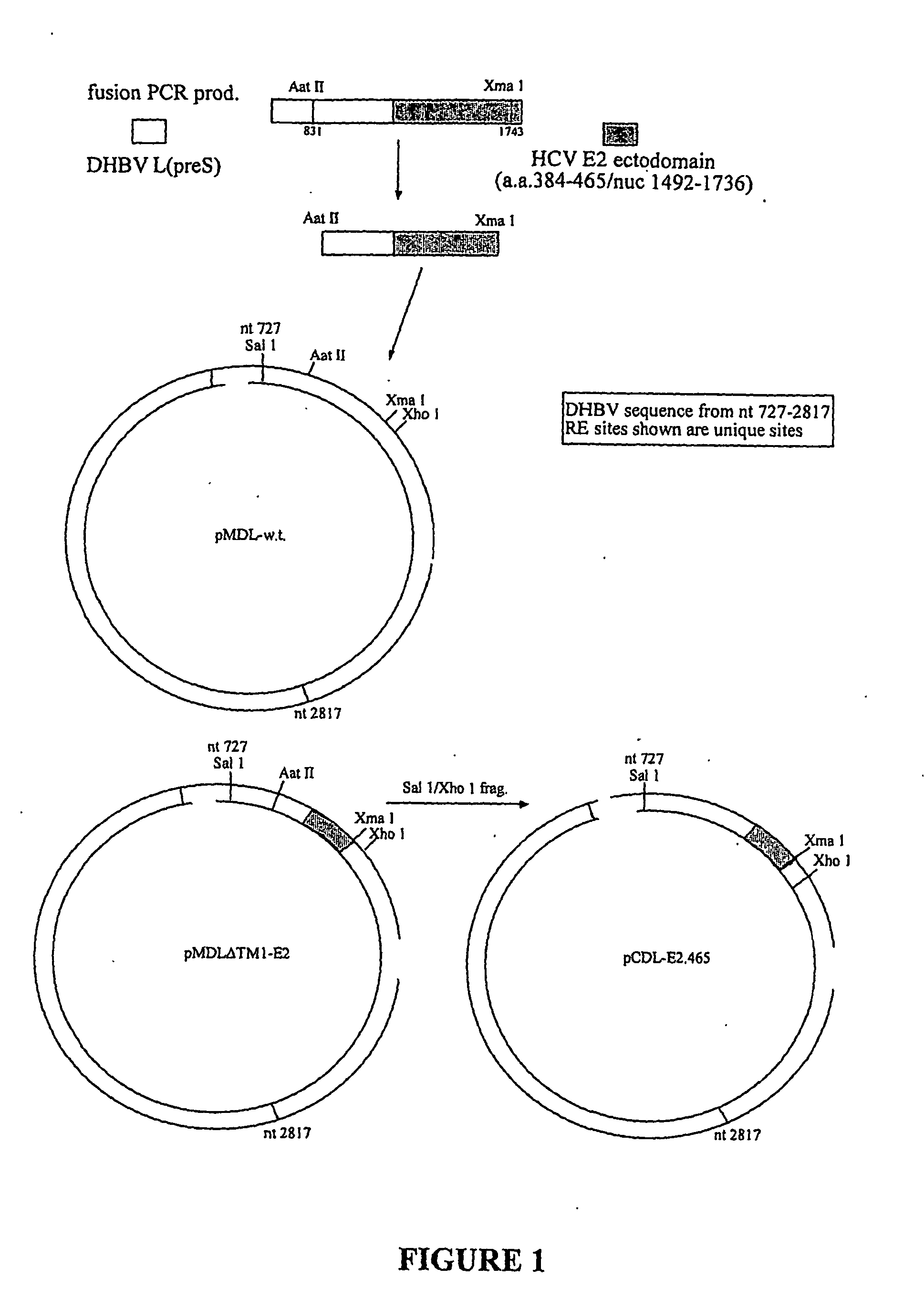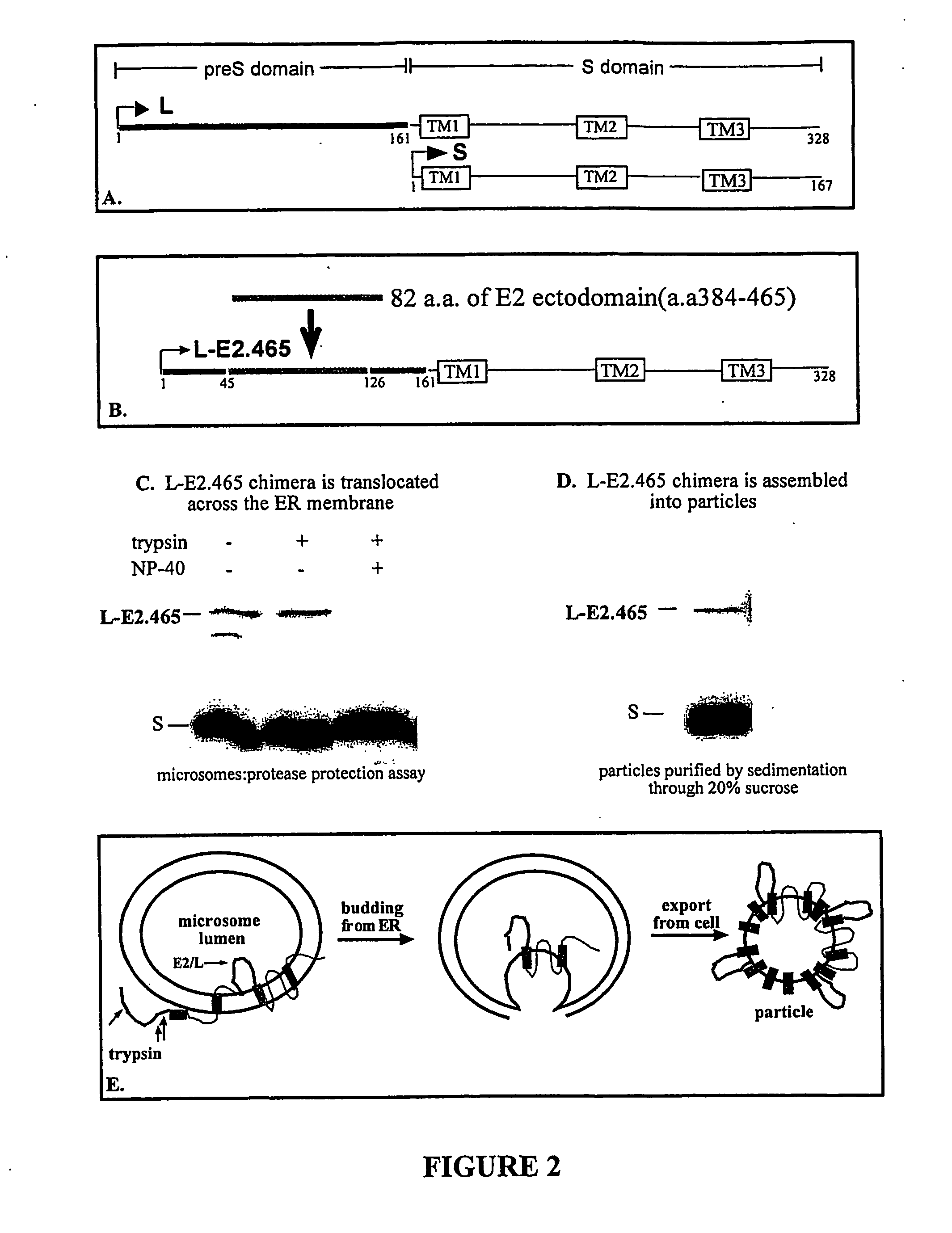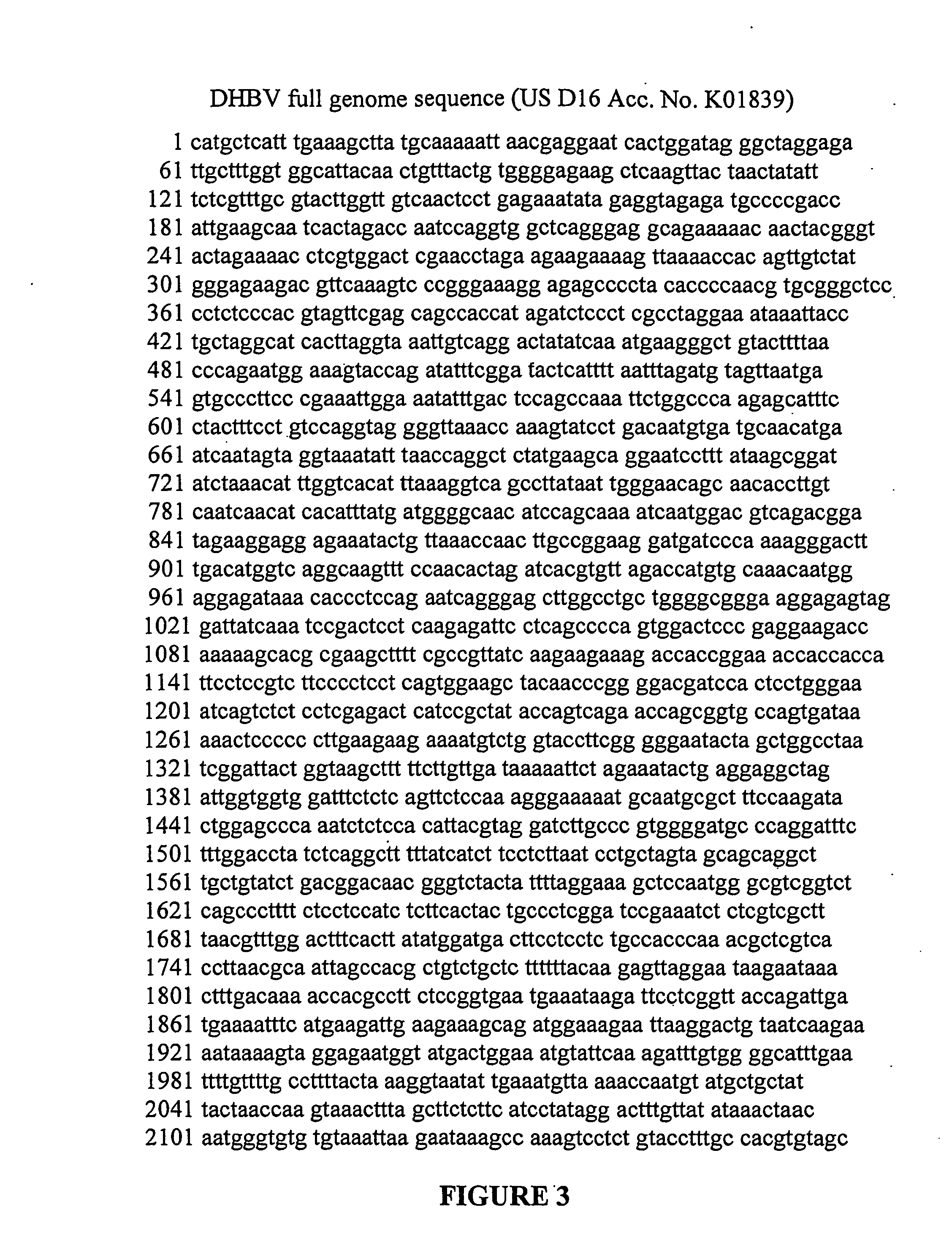Viral vectors expressing fusion of viral large envelope protein and protein of interest
- Summary
- Abstract
- Description
- Claims
- Application Information
AI Technical Summary
Benefits of technology
Problems solved by technology
Method used
Image
Examples
example 1
Substitution of a.a.45-125 of DHBV preS with the N terminal 82 Amino Acids of the Ectodomain of HCV E2 by Fusion PCR
[0159] Plasmid pCDL-E2.465 encodesa chimeric L protein consisting (from N to the C terminus) of DHBV L aa 1-4; HCV E2 aa 384 to 465; DHBV L aa 126 to 328. This represents an insertion of a protein of interest of 82 amino acids. Fusion PCR (overlap extension PCR) was used as described by Ho et al, Gene, 77:51, 1989. Overlapping primers were each paired with an outside primer complementary to the plus strand of pCDL-w.t. or the minus strand of HCV construct in 2 first round PCR reactions using pfu enzyme. The PCR products (153 bp from pCDL as template and 272 bp with the HCV template) from each reaction were purified using a Qiagen min elute kit and the two purified products used as the template for the fusion PCR reaction using the outside primers. The 578 bp fusion PCR product was purified and digested with Xma1, cutting at nt 1743 of the HCV primer sequence and with ...
example 2
[0162] Expression and Analysis of CDL-E2 in Avian Hepatoma (LMH) Cells
[0163] The avian hepatoma cell line, LMH was co-transfected with 5 μg each of pCDL-E2.465 and pCI-S (Gazina et al, Virology 242:266, 1998) using the dextran sulphate method (Grgacic et al, J. Gen. Virol. 79:2743, 1998). Day 3 post-transfection media were collected for assessment of exported particles and cells either processed for cytosolic fractionation and assessment of intracellular particle formation or isolation of microsomes for protease protection analysis or isolation of the membrane fraction for assessment of protein expression (Grgacic, J. Gen. Virol. 83:1635, 2002).
example 3
Isolation of Intracellular and Extracellular Particles
[0164] (i) Extracellular particles: Media from transfected LMH cells was harvested day 3 post-transfection and clarified of non-adherent cells by centrifugation for 5 min at 2,000 rpm.
[0165] (ii) Intracellular particles: Cell monolayers were washed twice with PBS and harvested by scaping cells into 1 ml PBS. Harvested cells were freeze / thawed three times with vigorous vortexing upon thawing. The cytosol fraction (supernatant) was obtained by centrifugation for 1 min at 10,000 rpm in an Eppendorf centrifuge. This procedure has been used in this laboratory to release DHBV particles from transfected cells capable of infecting primary duck hepatocytes.
[0166] Particles in the clarified media or cytosol fraction were diluted to 6 ml with PBS and pelleted for 3 h at 38,000 rpm in an SW40 rotor (Beckman) through 3 ml of 20% sucrose onto a 2 ml 70% sucrose cushion. The fraction at the 20-70% interface was collected from the bottom, met...
PUM
| Property | Measurement | Unit |
|---|---|---|
| Fraction | aaaaa | aaaaa |
Abstract
Description
Claims
Application Information
 Login to View More
Login to View More - R&D
- Intellectual Property
- Life Sciences
- Materials
- Tech Scout
- Unparalleled Data Quality
- Higher Quality Content
- 60% Fewer Hallucinations
Browse by: Latest US Patents, China's latest patents, Technical Efficacy Thesaurus, Application Domain, Technology Topic, Popular Technical Reports.
© 2025 PatSnap. All rights reserved.Legal|Privacy policy|Modern Slavery Act Transparency Statement|Sitemap|About US| Contact US: help@patsnap.com



